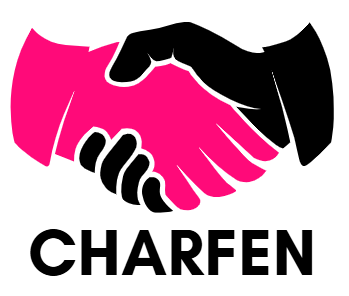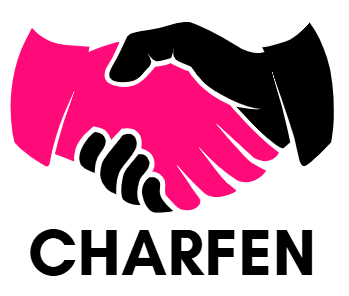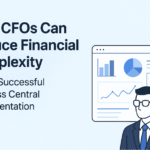Advertisement
The telecommunications industry is experiencing a funding renaissance, driven by 5G deployment acceleration and infrastructure modernization demands. Despite economic headwinds affecting other sectors, telecom startups are capturing investor attention through innovative approaches to connectivity challenges and network optimization.
Smart founders are leveraging this momentum by positioning their companies within high-growth niches that command premium valuations. The key lies in understanding which subsectors investors prioritize and how to navigate the unique funding landscape that defines telecommunications ventures.
This framework provides actionable strategies for securing investment across all growth stages while avoiding common pitfalls that derail promising telecom companies.
Telecom Capital Markets and Investment
Market conditions in 2025 favored telecom startups addressing critical infrastructure gaps and next-generation connectivity solutions. With private equity firms investing $194 billion into telecom infrastructure, focused on AI, autonomous vehicles, and smart cities, investor appetite has shifted toward companies demonstrating clear paths to profitability within 18-24 months.
Emerging funding trends show increased allocation toward B2B-focused telecom solutions over consumer-facing applications. Private equity firms are particularly active in telecommunications infrastructure, recognizing the sector’s essential nature and recurring revenue potential. Venture capital flows have concentrated on companies integrating artificial intelligence into network operations and those addressing rural connectivity challenges.
Government stimulus programs for broadband expansion continue creating co-investment opportunities, allowing startups to blend non-dilutive grants with private capital. This trend has attracted institutional investors who previously avoided the sector due to high capital requirements and regulatory complexity.
Funding Sources Mapped to Growth Stages
Appropriate investor types align with specific development phases, each bringing different capital requirements and expectations.
Pre-Seed: Angel and Accelerator Capital
Proof-of-concept funding typically ranges from $50,000 to $500,000 and comes primarily from industry veteran networks and telecom-focused accelerators. Angels with telecommunications backgrounds provide both capital and strategic guidance during early development phases.
Telecom-specific accelerators offer additional value through regulatory expertise, industry connections, and structured mentorship programs. These programs understand the unique challenges facing telecom startups and provide resources specifically designed for infrastructure-heavy businesses.
Seed: Sector-Focused Venture Capital
Market validation capital in the $500,000 to $3 million range comes from venture capital firms with telecommunications expertise and complementary portfolio companies. These investors understand sector-specific metrics and can provide strategic value beyond capital.
Sector-focused VCs offer portfolio synergies, customer introductions, and technical expertise that generalist investors cannot provide. Their deep industry knowledge accelerates product development and go-to-market execution.
Series A–B: Infrastructure-Oriented PE and Strategic Investors
Growth and expansion funding typically exceeds $5 million and comes from private equity firms or corporate venture arms with telecommunications focus. These investors support significant infrastructure deployments and market expansion initiatives.
Strategic investors from established telecom companies bring additional value through partnership opportunities, technical resources, and market access. Corporate venture arms often provide faster decision-making processes and industry-specific due diligence capabilities.
Blending Grants and Private Capital Without Delay
Strategic coordination between non-dilutive government funding and venture capital maximizes runway while minimizing equity dilution. This approach requires careful planning but significantly improves startup financial position.
| Grant Type | Typical Amount | Private Investment Compatibility |
| SBIR Phase I | $50,000-$500,000 | High – proof of concept stage |
| SBIR Phase II | $1M-$2M | High – scales with Series A |
| Rural Broadband Grants | $100,000-$10M+ | Medium – regulatory compliance required |
| State Innovation Funds | $25,000-$1M | High – flexible terms |
| DOE Smart Grid Grants | $500,000-$5M | Medium – specific use restrictions |
Timeline Synchronization
Aligning grant disbursement schedules with private funding milestones prevents cash flow gaps and maintains investor confidence. Grant applications should begin 6-9 months before anticipated private funding rounds to ensure timing alignment.
Successful companies create integrated funding calendars showing when different capital sources become available. This planning approach prevents gaps that could slow product development or market entry.
Compliance Documentation
Maintaining grant requirements while satisfying investor due diligence demands organized documentation systems and clear communication protocols. Companies must demonstrate that grant-funded activities complement rather than conflict with investor-supported initiatives.
Proper documentation includes separate accounting for grant-funded activities, compliance reporting systems, and clear intellectual property ownership structures. These systems satisfy both grant administrators and private investors.
Milestone-Based Drawdowns
Structuring funding releases around specific technical and commercial milestones optimizes cash flow while building investor confidence. This approach demonstrates progress toward commercialization while preserving capital for critical development phases.
Milestone-based structures also align with grant disbursement schedules, creating natural synchronization points between different funding sources. Companies can use grant-funded achievements to unlock private investment tranches.
For founders understanding the telecom funding strategies becomes essential for maintaining adequate runway while minimizing dilution.
ESG and Sustainability Signals Investors Require
Environmental, social, and governance criteria have become mandatory considerations for telecommunications investment decisions. Investors increasingly demand measurable impact metrics demonstrating responsible growth practices.
Emissions Reduction Metrics
Carbon footprint tracking for network operations provides quantifiable environmental impact data that institutional investors require for ESG compliance. Companies must implement monitoring systems that measure energy consumption, emissions per subscriber, and carbon intensity improvements over time.
Green energy adoption plans demonstrate long-term commitment to sustainability while potentially reducing operational costs. Solar installations, wind power agreements, and energy-efficient equipment choices create competitive advantages while satisfying investor requirements.
Energy-Efficient Network Design
Power consumption optimization through intelligent network design reduces both environmental impact and operational expenses. Advanced antenna systems, software-defined networking, and AI-powered load balancing significantly improve energy efficiency.
Sustainable infrastructure deployment strategies include equipment lifecycle management, responsible sourcing practices, and circular economy principles. These approaches reduce environmental impact while creating cost advantages that improve financial performance.
Social Impact on Underserved Areas
Digital inclusion initiatives addressing connectivity gaps in rural or low-income communities create measurable social impact that resonates with impact investors. Community connectivity programs must include specific metrics for population served, economic development outcomes, and educational access improvements.
These programs often qualify for additional grant funding while creating positive brand recognition and regulatory goodwill. The combination of social impact and business benefits appeals to a broader range of investor types.
AI and Automation as Valuation Multipliers
Artificial intelligence integration consistently drives higher startup valuations by demonstrating technology differentiation and operational efficiency gains. Investors recognize AI’s potential to transform telecommunications economics through cost reduction and service improvement.
Predictive Maintenance Savings
Machine learning algorithms that predict and prevent network failures reduce operational costs while improving service quality. These systems analyze historical data patterns to identify potential problems before they impact customers.
Operational cost reduction models show investors how AI implementation improves unit economics over time. Companies demonstrating 20-30% maintenance cost reductions through predictive analytics consistently command premium valuations.
Network Optimization Revenue Upside
AI-driven capacity management enables dynamic resource allocation that improves service quality while reducing infrastructure requirements. These systems automatically adjust network parameters based on usage patterns and performance requirements.
Dynamic resource allocation creates revenue opportunities through improved service quality and reduced infrastructure investment needs. Companies can serve more customers with existing infrastructure while maintaining superior performance standards.
Customer Experience Personalization
Automated service customization reduces churn while improving customer satisfaction and lifetime value. Machine learning systems analyze usage patterns to optimize service delivery for individual customers.
Churn reduction through intelligent network management creates significant value for telecommunications companies. Even modest improvements in customer retention dramatically impact lifetime value and overall business performance.
Building a Data-Driven Investor Outreach Engine
Systematic approaches to identifying, prioritizing, and engaging potential investors using analytics and automation tools significantly improve fundraising efficiency and success rates.
Investor Persona Scoring
Qualification criteria based on portfolio fit, investment stage, and sector focus help identify the most promising investor prospects. Scoring systems should consider previous telecommunications investments, check sizes, and investment timing preferences.
Database tools that track investor activities, portfolio companies, and investment patterns enable targeted outreach efforts. This research prevents wasted time on inappropriate investors while identifying warm introduction opportunities.
Personalized Email Sequencing
Customized messaging based on investor preferences and portfolio companies improves response rates and meeting conversion. Email sequences should reference specific portfolio companies, investment theses, and recent sector activities.
Automation tools enable personalized outreach at scale while maintaining authentic communication. These systems track engagement metrics and optimize messaging based on response patterns.
CRM and Data Room Integration
Streamlined information sharing through integrated systems accelerates due diligence processes and improves investor experience. Automated follow-up sequences ensure consistent communication throughout the fundraising process.
Data room access controls and audit trails provide transparency while protecting sensitive information. These systems satisfy investor requirements while maintaining security and confidentiality.
Crafting a Pitch Deck That Survives Telecom Due Diligence
Essential slides and data points address telecom-specific investor concerns while simplifying technical complexity for financial audiences. Successful presentations balance technical credibility with business clarity.
Capex Allocation Model
Infrastructure investment breakdowns must show clear relationships between capital deployment and revenue generation. Investors need to understand how different infrastructure components contribute to service delivery and customer acquisition.
Return on invested capital projections should include sensitivity analyses showing performance under different scenarios. These models demonstrate management’s understanding of capital efficiency requirements in telecommunications.
Regulatory Strategy Slide
Licensing roadmaps provide investors with realistic timelines for market entry and expansion. Compliance strategies must address both current requirements and anticipated regulatory changes.
Risk mitigation approaches show investors how companies plan to handle regulatory uncertainties. These strategies should include backup plans and alternative approaches if primary regulatory paths encounter delays.
Traction and KPI Evidence
Network performance metrics demonstrate technical capability and operational excellence. Key indicators include uptime percentages, latency measurements, and capacity utilization rates.
Customer acquisition and retention data validate market demand and business model effectiveness. These metrics should show consistent improvement over time and compare favorably to industry benchmarks.
Alternative Financing for Capex-Heavy Projects
Non-traditional funding mechanisms reduce equity dilution while providing access to growth capital. These approaches suit telecommunications infrastructure requirements and cash flow patterns.
Revenue-Based Financing
Income-based repayment structures align with telecom cash flow patterns while preserving equity for strategic investors. These arrangements typically cost more than traditional debt but require no personal guarantees or asset pledges.
Revenue-based financing works particularly well for telecom companies with predictable subscription revenue streams. Repayment terms based on monthly recurring revenue create natural cash flow alignment.
Equipment Leasing Structures
Asset financing options optimize balance sheets for hardware-intensive deployments while preserving working capital for operations. Leasing arrangements often include maintenance and upgrade options that reduce operational complexity.
Equipment leasing enables faster deployment schedules by reducing upfront capital requirements. Companies can begin revenue generation while spreading equipment costs over longer periods.
Crowdfunding for Community Networks
Local investment mobilization creates both capital and customer commitment for community-focused projects. Crowdfunding campaigns generate market validation while building stakeholder engagement.
Community-supported infrastructure development often qualifies for additional grant funding and regulatory advantages. Local investment demonstrates community support that appeals to impact investors and government programs.
Key Metrics Telecom Investors Track Before Wiring Funds
Critical performance indicators determine investment decisions and must benchmark favorably against industry standards and competitor performance.
| Metric Category | Range | Investor Expectation |
| ARPU (Monthly) | $25-$200+ | Trending upward quarterly |
| Monthly Churn | 1-5% | Below industry average |
| Customer Acquisition Cost | $50-$500 | Payback under 18 months |
| Gross Margins | 60-85% | Improving with scale |
| Capex/Revenue Ratio | 15-40% | Declining over time |
ARPU and Churn Benchmarks
Average revenue per user targets vary significantly by service type and customer segment. B2B services typically generate higher ARPU than consumer offerings while maintaining lower churn rates.
Customer retention standards for different service types help investors evaluate business model sustainability. Enterprise customers typically exhibit lower churn but require higher acquisition costs than consumer segments.
Spectrum or License Portfolio Value
Regulatory asset valuation creates competitive advantages and barriers to entry for telecommunications companies. Spectrum holdings in valuable frequency bands command premium valuations from investors.
Competitive positioning through spectrum holdings enables service differentiation and capacity advantages. Companies with superior spectrum positions can offer better service quality while maintaining higher margins.
Capex-to-Revenue Ratio
Infrastructure efficiency metrics demonstrate scalability potential and capital allocation effectiveness. Companies showing declining capex ratios as they scale indicate improving operational leverage.
Scalability indicators for network deployment help investors understand how efficiently companies can expand their geographic footprint and customer base.
From First Meeting to Term Sheet Faster With Qubit Capital
Accelerating fundraising timelines through AI-powered investor matching and streamlined due diligence processes helps telecom startups secure funding more efficiently. Data-driven insights optimize investor selection while reducing time to close.
Companies seeking specialized assistance can leverage Qubit Capital’s Fundraising Services for Telecom Startups, benefiting from industry expertise and an extensive investor network to navigate the complex telecommunications funding landscape. The team understands the unique challenges facing infrastructure-heavy businesses and provides strategic guidance throughout the capital raising process.
Frequently Asked Questions
How early should telecom startups engage grant consultants when pursuing 5G funding?
Grant consultants should be engaged during business plan development, typically six months before funding application deadlines. Early engagement ensures compliance requirements are built into operational planning and increases approval probability.
What legal entity structure simplifies receiving both US and EU capital?
Delaware C-Corporation with EU subsidiary structure provides optimal flexibility for cross-border investment. This arrangement satisfies US venture capital requirements while enabling European grant and investment access.
How do telecom startups protect proprietary algorithms during data room sharing?
Use tiered disclosure with summary descriptions initially, then detailed technical documentation only after signed letters of intent. Implement virtual data rooms with access controls and audit trails for sensitive intellectual property.
Can revenue-based financing coexist with convertible notes in one funding round?
Yes, these instruments can be structured together with proper subordination agreements and conversion mechanics. Revenue-based financing typically takes senior position while convertible notes convert during subsequent equity rounds.












